The absence of social norms during the pandemic provided space for students to better understand themselves
By Jack Wise
Visuals by Laila Amer
Content warning: This article contains mentions and descriptions of eating disorders
Sitting at my tan wooden desk, I attentively stared at my computer screen, browsing through YouTube on my laptop after a long stint of completing pre-recorded lectures. It was a cold, snowy day in November 2020 and I was in the middle of my first full semester of online learning.
“Hey Vogue!” I heard Princess Nokia say as the video began and I immediately perked up, giving her my full attention. She outlined her day in New York City during quarantine. As she got ready in a high-fashion tank top and a denim skirt, she exuded confidence in her style and identity as she went about her day.
After the video ended, I ran to my closet, hangers screeching as I rummaged through clothes. I carefully analyzed every shirt and pair of pants I owned, frowning as I began to pace back and forth. I realized what I saw in front of me didn’t reflect the style I wanted to embody when I left the house, nor how I felt about my gender identity. That familiar feeling of frustration that’s become so normal during self-isolation came over me.
Turning away from my bedroom, I reached for a magazine I bought on a whim at the grocery store. My eyes caught the bright editorial photos intertwined with stories as I flipped through the pages of Vanity Fair. I studied the styles, both masculine and feminine, and became engrossed in them. Running my fingers over the pages, the illustrious outfits and their genderless nature spoke to me. Looking up, my eyes scanned the room as my mind raced, and a sudden realization came together that the non-binary identity I’ve recently discovered could be expressed in endless ways through my fashion.
Throughout the pandemic, Ryerson students have reported learning more about their body image and how they perceive their self-worth and identity, outside of social norms and away from social pressure. Prior to the pandemic, the way in which students were once expected to dress, act, look and identify was influenced by social expectations of how they should do so. When these expectations were removed during self-isolation, students were suddenly granted the time and space to work through their relationships and feelings towards their own bodies.
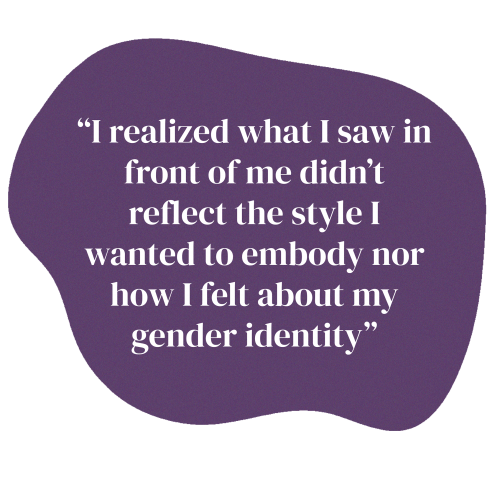
Without the imposition of societal standards found outside the home, Jenna Drenten, associate professor of marketing at Loyola University Chicago, says “social pressure” has gone away and allowed people to discover more about themselves during the pandemic.
“People are recognizing that things around body image and this heteronormative ideal are not [something we must live up to,] because we don’t have everyone reflecting it back to us,” she says.
The lack of societal standards in isolation often leads to self-growth, which can significantly help individuals face setbacks brought on by the COVID-19 pandemic, according to an April 2021 Australian study. The pandemic brought on a collective awakening about exclusive body and gender standards, leading people to question how social norms affect the sense of self, according to the Columbia Spectator.
“When there’s no real incentive or ability to be around groups of people physically, there’s no real incentive to play into those society’s expectations of what it means to be socially presentable,” says Drenten.
In the past, I felt bullied by social norms and the people around me into adhering to the gender binary. This pressure shaped my behaviour as I attempted to satisfy it; I fell more in line by dressing more masculine. But self-isolation removed society’s expectations of how I should dress and feel, as it has for many others. Setting down the copy of Vanity Fair, I realized I could be empowered and confident in expressing my non-binary identity regardless of what society says.

ust as their Zoom class wrapped up for the day, Lissa Homewood* closed their laptop, stood up from the desk in their bedroom and immediately began to feel uncomfortable. As the seasons changed in the fall of 2020, they were wearing multiple layers while sitting in their room. Feeling hot, sweat droplets had formed on their chest underneath their sweater.
Frozen in the moment, they suddenly felt conscious of their body in comparison to the androgynous image they had of themselves in their head. While they felt their body was near this standard of the ‘ideal’ feminine body image—slim figure, large chest, clear skin and facial features enhanced with makeup—they focused on how society characterizes feminine physical features in relation to their own body. Before they could dwell on it, they got up, put on a bra and went back to their desk to continue working on assignments.
Over the course of the pandemic, Homewood had lost a lot of weight but slowly gained it back over time. As they did so, they began to notice their body coming back into what they call the idealized “oversexualized” feminine physique. They noticed how their chest grew to the point that it was uncomfortably noticeable, leading them to feel a disconnect between their assigned female sex at birth and their gender identity.
During this time, Homewood was also in isolation, which took away external pressures of how they should look. Going from a busy schedule and attending classes to barely going out gave them time to think about their identity. “That kind of led to me thinking about myself less as a woman and more like a person,” they say.
As Homewood saw their roommate find confidence in their non-binary identity, they began to question their own. The 2021 media production graduate turned to online research about different aspects of non-binary identity late at night, soaking in what transgender and non-binary content creators had to say about their journey of self-discovery and gender expression.
“Picking up all the different stories of different people and different types of ways that you can be non-binary was helpful to me,” Homewood says. “I could figure out that I didn’t have to fit to one particular mould.”
What Homewood experienced during the pandemic was gender dysphoria. This is when there’s a strong disconnect between how one sees their gender identity versus how their body looks, according to Rainbow Health Ontario, a program at Sherbourne Health, a community health centre in Toronto, advocating for better healthcare for 2SLGBTQ+ communities. Feeling at odds with gender identity in the face of social norms is a common feeling of gender dysphoria.
Times of stress can increase feelings of gender dysphoria, according to a 2019 article published in Sexuality Research and Social Policy. While feeling at difference with body image, the study says it’s common for transgender people to feel unhappy in their body’s appearance and to desire socially accepted physical features.
Finding confidence in expression over the course of the pandemic lets people approach society as an empowered version of themselves, says Samantha Brennan, dean of College of the Arts at the University of Guelph. She says being able to express oneself freely can be “a bit of an eye-opener about who they really are.”
The following month in November, Homewood struggled to pull a chest binder loaned to them by their roommate over their broad shoulders. Talking to a friend beforehand, they decided to try it on to find the right sizing before ordering one for themself.
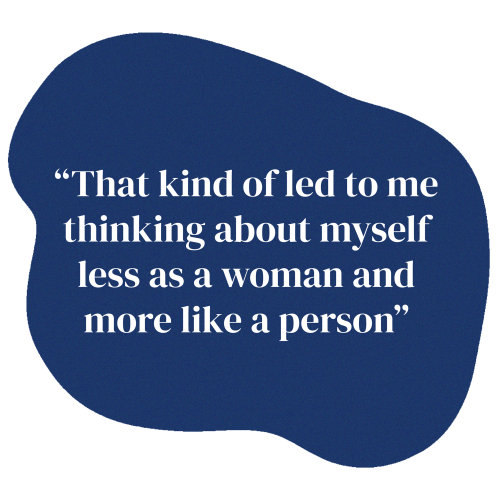
Studying their reflection in the mirror after fitting it around their chest, the difference felt noticeable to them. Their chest looked flatter. It was a full-circle moment as they gradually began to find comfort in non-binary identity over the course of the pandemic.
After putting a shirt on over the binder, they walked into the living room radiating a new sense of confidence in their identity as their roommate cheered them on. They then went outside for a walk with their partner; he didn’t say anything about their appearance the entire time and as they both walke. Homewood felt their chest wasn’t as exposed as it used to be. “No one’s really looking at you. I’m not as under scrutiny as I think I am,” they said.
A few days later when their own binder arrived, they picked up their phone and texted their sister, who had supported them throughout their journey, photos of the tight yet flat fit. For the first time, Homewood smiled in the mirror and felt closest to the image they had of themselves in their head.
At times the question of gender expression and identity crosses Homewood’s mind but through their research and journey, they find the two are fluid. They feel comfortable in their body by wearing a chest binder and they still have long hair and enjoy putting on makeup.
“The way that we choose to present our physical body can be indicative of the way that we are on the inside, but it doesn’t have to be the same,” they say.

ate one night in May 2020 during the first wave of the pandemic, Maverick Sleep climbed up the stairs from his bedroom in the basement of his family home to the kitchen. He sifted through his pantry looking for snacks and opened up the fridge to check for any leftovers he could eat, even though his stomach wasn’t gurgling or aching in hunger. Yet, his mind solely fixated on eating as much food as possible.
After taking his last bite, it washed over the 2020 RTA sports media graduate what had just happened—the feeling of guilt rushed through him overwhelmingly as he started feeling remorse and self-pity. This same cycle repeated throughout the week as Sleep developed a binge-eating disorder.
In the midst of the first lockdown, Sleep had moved from his apartment in downtown Toronto back to live with his parents in a town just north of Oshawa, Ont. Yet, while he had moved home, being away from his friends, girlfriend and his past social life began to take a toll on him. There were no more distractions from how he felt about his body and the way he looked.
“Isolation was totally different because there was no backup plan. It’s not like, ‘Oh, I’m feeling down, I can go to the gym; I’m feeling down, I can call up a friend, we can go have a drink’,” says Sleep. “There was none of that.”
According to a 2020 article published in the International Journal of Eating Disorders, a lack of physical activity seen in day-to-day routines and resulting anxiety makes people more conscious of their weight and body image. This can significantly increase the risk of developing an eating disorder.
Body image is something Sleep has worked on throughout his life. He would often binge-eat during university when things were hard or when he was going through a depressive episode, but the impulse heightened as the pandemic caused lockdowns and closures. He remembers sitting at home scrolling through his phone and seeing an influx of videos catered to toning the body or losing weight. “That’s really degrading,” says Sleep. He’s always been conscious of his weight; whenever he would gain a few extra pounds, he says he can immediately notice it in his stomach area. He remembers standing in front of the mirror numerous times and cringing at his reflection, negativity clouding his brain.
Finding comfort in food, especially in cases reminiscent of the looming uncertainty brought on by the pandemic, is a common response to stress. Moulded social norms and stress can also increase the likelihood of developing an eating disorder, according to the National Eating Disorder Information Centre.
The pressure of social norms can be thought of and acted on, as Elena Faccio points out in her book The Corporeal Identity: When the Self-Image Hurts. She explains that the body is viewed through cultural and social standards that influence what’s deemed to be “normal” and “desired.” This then creates a subjective self-image on the basis of those social representations.
A lack of activity compared to before the pandemic can lead to obsession over body image, says Anne Wilson, a professor of psychology at Wilfrid Laurier University. Through the process of societal “objectification” of the body via social norms and an idealized body image, people tend to scrutinize the way they look and pressure themselves to meet a desired image.
Turning to binge-eating can help temporarily reduce stress, but Wilson says it can create “a vicious cycle, because feeling bad about your body can then be another source of stress which for some people may lead to more stress-eating.”
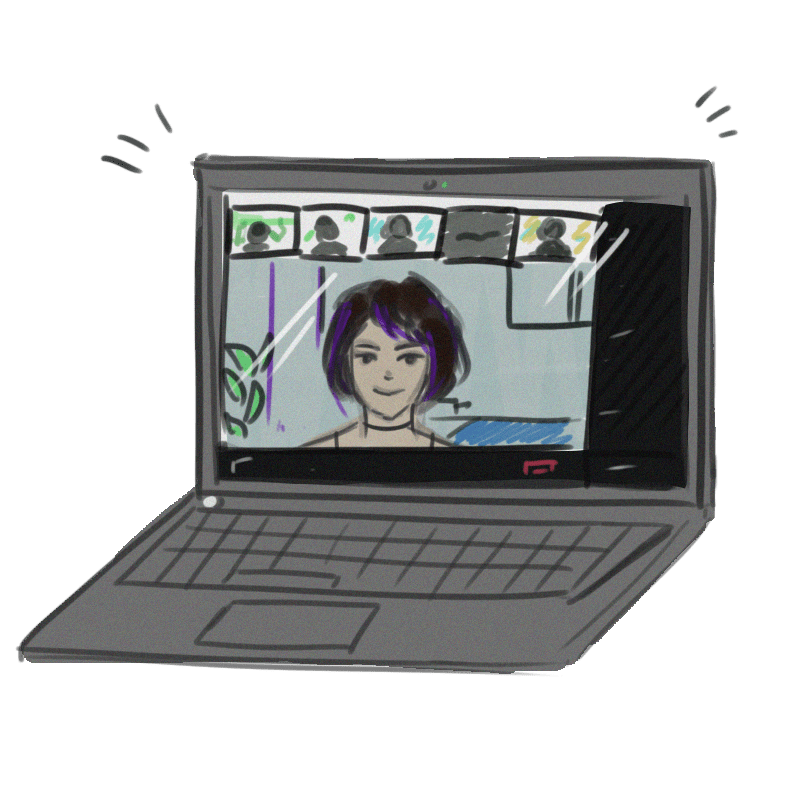
From January to May of this year, Sleep logged onto Microsoft Teams every Tuesday to join his group therapy session for other individuals in the Durham region who were similarly navigating and learning more about their binge-eating disorders.
The sessions would start at ten in the morning and at around noon, each day focusing on a new topic of discussion, like how to address negative thoughts related to their bodies and learning coping mechanisms to instill body positivity. Sleep says doing activities like these helped him develop the skills he needed to distract himself from binge-eating.
In the group, Sleep recalls learning about “checking.” Now, when he goes up to the mirror and thinks negatively of his body, he records what those negative thoughts are as well as how many times he has them, with the goal of decreasing them week-by-week. He also tries to think positive thoughts as well.
Being able to learn from and talk within that group every week significantly improved Sleep’s body image as he learned to better understand and manage his eating disorder. “That did help improve my body image and just my overall self worth,” says Sleep. “Right when the group ended was probably the best I’ve been in a long time.”

alking through a downtown store this past August following the third wave of the pandemic, I drifted away from the men’s section of the store and into the ladies’ department. Outside of helping a friend or loved one shop, I had never done this before.
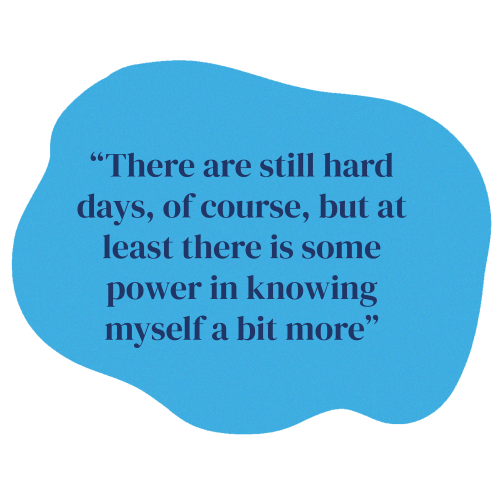
As my eyes lingered over the racks of clothing, I first felt myself tense up as if I was in the wrong place. Before the pandemic, I usually went into stores to browse the men’s department and often felt dissatisfied with their selection. Browsing through the women’s section never seemed like an option back then.
However, a soft blue, oversized sweater vest caught my eye. Picking it up, my fears disappeared. When I tried on the sweater vest in the fitting rooms, a sense of confidence radiated through me when I saw how I looked with it on in the mirror. If something speaks to me and my aesthetic and empowers me, why shouldn’t I be able to wear it?
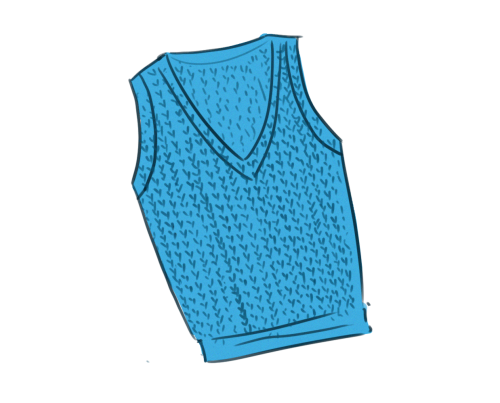
Looking down on myself became something I turned to during self-isolation, picking apart every aspect of my appearance for no apparent reason. After finding assurance in my identity through both masculine and feminine fashion, I knew the sweater was for me. Before the pandemic, I may not have even tried it on.
Standing in line to pay, I texted a close friend about how I would style it with my Nike Air Force 1 shoes and a cognac handbag. As I typed out the message, I realized how getting in touch with my gender identity through a now-refined and cultivated fashion sense took great strength in light of the hardships the pandemic has brought on. There are still hard days, of course, but at least there is some power in knowing myself a bit more.
*Name changed for anonymity
With files from Abeer Khan

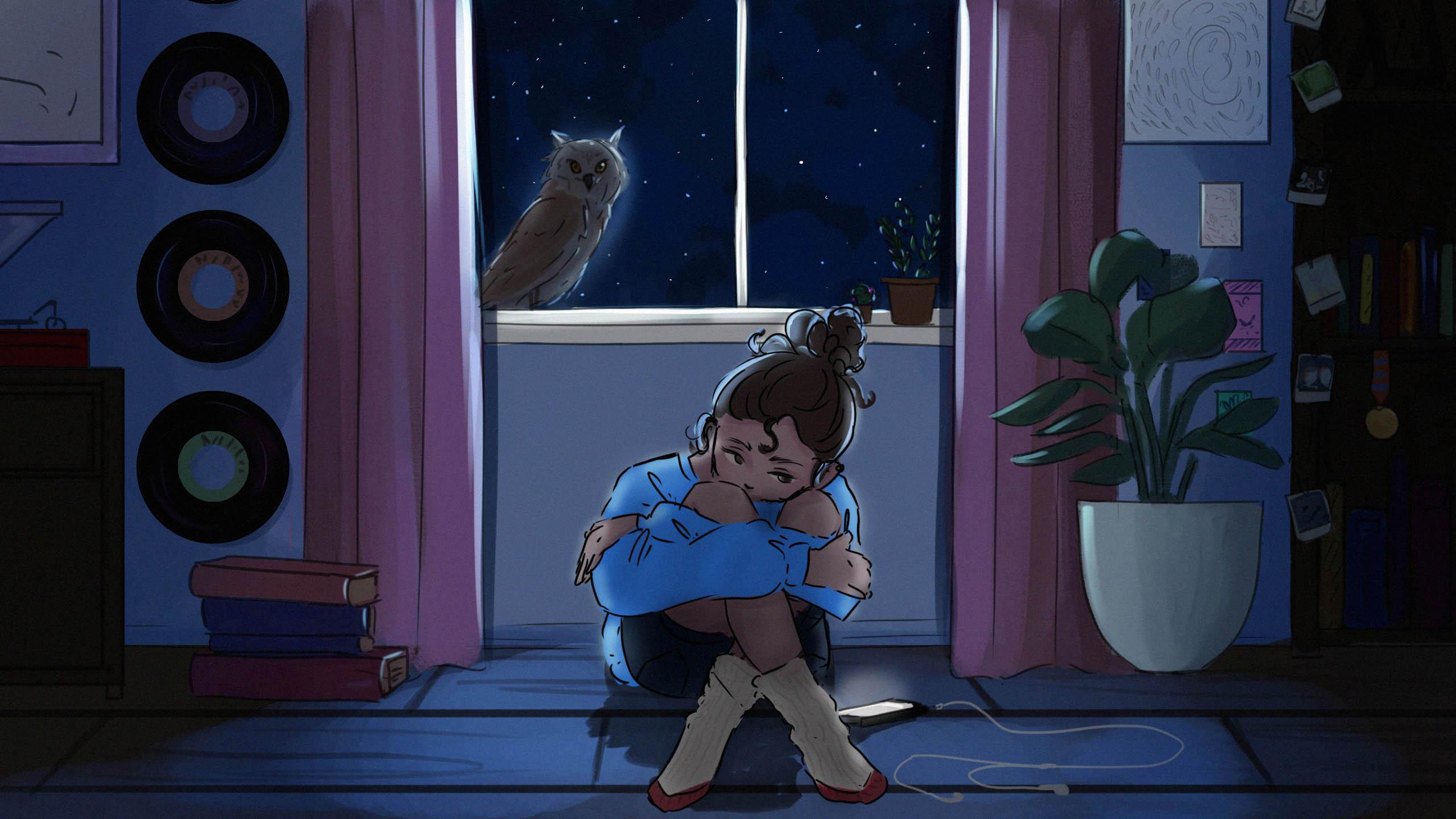








Leave a Reply